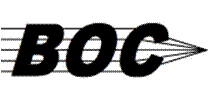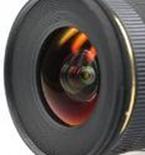
|
PATENTS |

|
Bryars Optical Consulting |

|
info@bryarsoptical.net |
|
Bryars Optical Consulting Santa Rosa, CA
|

|
Light Sources Assemblies (pending) Inventors: Bryars, Sommer, Egerton, Fortenberry, Scobey
Abstract: A light source assembly comprises: a light pipe and one or more tapered light collectors operative to reduce the angular distribution of light entering the light pipe from light sources at one or more ports. Dichroic filters and angle-dependent, wavelength selective pass filters control light flow into and through the light pipe. The tapered light collector is operative to reduce the angular distribution of light entering the light pipe. At least a first dichroic filter positioned in the light pipe optically between first and second light entrances is operative to pass first color light from the first light source toward the light port, and to reflect second color light from the second light source toward the light port.
#8,237,876: Tilted C-Plate Retarder Compensator And Display Systems Incorporating The Same (2012) Inventors: Bryars, Kim Leong, Hendrix, Shemo, Mayer
Abstract: A C-plate compensator is disclosed for compensating the residual A-plate and C-plate retardance of a reflective liquid crystal on silicon (LCoS) display or a transmissive liquid crystal (LC) display in a projection display system. The C-plate incorporates a form-birefringent coating, whose retardance magnitude can be adjusted by tilting with respect to the display panel (X-Y) plane. The tilted plate is rotated about the Z-axis by a prescribed amount from the slow axis of the display panel. Criteria are described for choosing the tilt and rotation angles such that the contrast of the display system produced by the compensated panel is optimized.
#6,398,364: Off-axis image projection display system (2002) Inventors: Bryars, Brett J.
Abstract: An image projection display system is provided which utilizes an off-axis illumination configuration. A beam splitter is configured to direct a first light beam along a first optical path toward reflective imaging devices adapted to direct a second light beam along a second optical path to produce an image to be projected. Polarizing devices are interposed between the beam splitter and each imaging device, with the polarizing devices configured to allow passage of a first polarized component of the light beam while blocking passage of a second polarized component of the light beam. The display system provides a high contrast ratio and degree of brightness which significantly improves the final image quality projected to a display screen.
#6,340,230: Method of using a retarder plate to improve contrast in a reflective imaging system (2002) Inventors: Bryars, Brett J.; Greenberg, Michael R.; Sullivan, Sean
Abstract: Methods and apparatus for enhancing the performance of a reflective liquid crystal display system. The high-contrast color splitting prism system utilizes a double-pass prism assembly. Polarized light enters the prism assembly, is color-split and emitted as separate colors to spatial light modulators which reflect each color in accordance with a desired image. The reflective light is passed, once again, through the prism assembly where the separate colors converge and propagate to a projection lens for display of the image on a screen. A waveplate retarder is positioned between the liquid crystal display and the polarizing element. The waveplate retarder is tilted with respect to the optical axis to eliminate the deleterious effects of the Fresnel reflections at the interfaces of the waveplate retarder.
#6,144,498: Color separation prism assembly and method for making same (2000) Inventors: Bryars, Brett J.; Hendrix, Blain J.
Abstract: A color separation device useful in information display systems is assembled from three prisms in an arrangement that provides for air equivalent thickness adjustment for each color. The air equivalent thickness adjustment provides for the correction of deviations in any of the three prisms, as well as providing a method to correct for the chromatic aberration arising from other optical elements in the information display system. The color separation device improves image quality and provides opportunities to lower the display system cost by using low tolerance components and/or plastic optical components normally having a high chromatic aberration.
#5,986,815: Systems, methods and apparatus for improving the contrast ratio in reflective imaging systems utilizing color splitters (1999) Inventor: Bryars, Brett
Abstract: Methods and apparatus for enhancing the performance of reflective LCD systems. The high-contrast color-splitting prism system utilizes a "double-pass"prism assembly. Polarized light enters the prism assembly, is color-split and is emitted as separate colors to reflective imagers which reflect each color in accord with a desired image. The reflected light is passed, once again, through the prism assembly where the separate colors converge and the convergent light is emitted to a projection lens for display of the image on a screen. At least one zero-incidence waveplate compensator is positioned between one reflective imager and the prism assembly. The waveplate compensator effectively decreases the unwanted polarized light entering the prism assembly for the second pass-through, thereby increases the polarization purity of the light that is emitted from the prism assembly to the projection lens to yield a high-contrast projection image. |